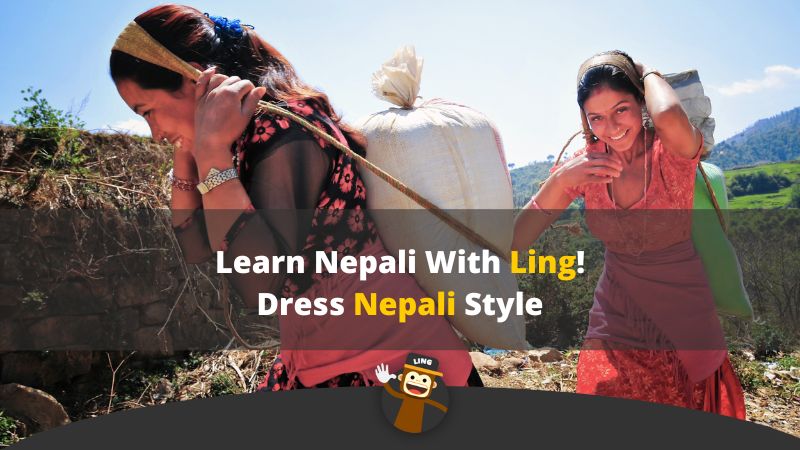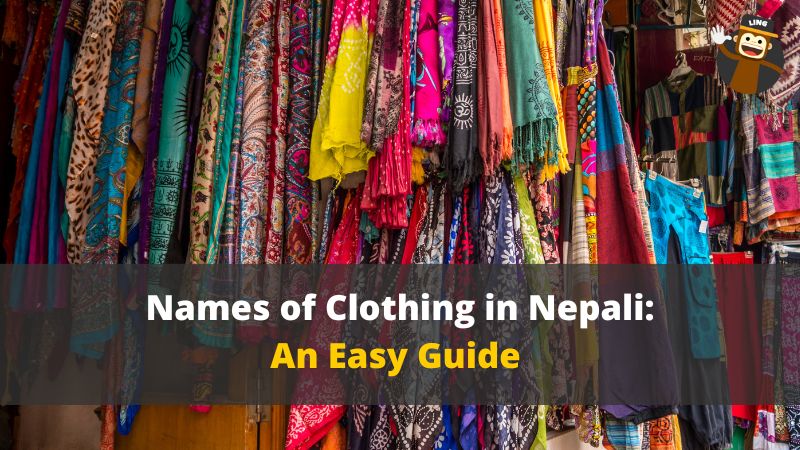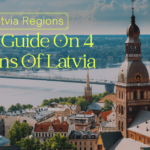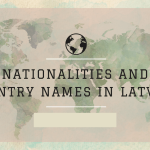Nepal is a beautiful country filled with different cultures, languages, ethnic groups, and religions, which reflects in their daily life and clothing. The country is well known for the highest mountain peak in the world – Mt. Everest.
Still, it is also the land that faces several natural hazards due to its vast bio-diversity and geographical location. Due to this, the Nepalese people and their clothing also face a wide variety. Here, you will find popular names for clothes in Nepal.
Weather In Nepal
Nepal has five seasons: spring, summer, monsoon, autumn, and winter. In the humid parts, primarily the Tarai region (South of Nepal), temperatures range from 40 to 45 degrees Celsius, and in winter, the temperatures range from 5-32 degrees Celsius.
From this information, it is safe to conclude that you will have to be well prepared on what to pack for a trip to Nepal, depending on the season and weather.
Names Of Traditional Outfits In Nepal
Below is a list of Nepali clothing and costumes (traditional dress) for men and women in regions of Nepal.
Popular Clothing For Men In Nepal
- Daura Suruwal: This is a closed-neck shirt with long sleeves often worn with baggy pants and the most common traditional attire of Nepali men. A coat was added to this attire, making it look like a double-breasted shirt. This was done many years ago by one of the Nepalese prime minister. It is considered more formal wear.
- Paula: This is a piece of cloth wrapped around the waist of Nepali women, especially by those who are heavy workers, with the idea that this prevents back ache. This has become part of the traditional dress.
- Photo: This translated to vests in Nepali worn by men.
- Topi: It is part of the Nepali national dress worn by men of Nepal. It is also famous as Dhaka topi or Nepali topi. Topi day was declared on January 1st, where Nepali Youth wear the Dhaka topi to remember the tradition.
- Coat: This is called Kota in Nepali. It is worn over the upper wear and is permanently fitted.
- Photo: It is a turban-like national headdress worn as a sign of nobility.
Popular Clothing For Women In Nepal
Besides wearing gold jewels or even silver or their imitations, women wear several other clothing in Nepal. Here is a list:
- Ghalek: Women from Gurung and Temak communities of wear this shawl. This garment is worn draped from one shoulder to the opposite waist.
- Patti: Often called Haku Patasi, which literally means black saree, worn by Newar people, and its raw materials are primarily household-grown cotton or natural fabric.
- Pashmina: It is made from Himalayan goat hair. These are the world’s finest cashmere. It is known for its soft, light and warm texture welcomed in cold regions.
- Ginyu Cholo: It is traditional attire for Nepalese women comprising a blouse and long skirt.
- Kurta Suruwal: The upper part is usually a knee-length dress with trousers and a large scarf.
Names For Clothes In Nepal During Festivals

A perfect and detailed description of traditional clothing in Nepal can be found in our previous blog post. It covers the dhoti, lungi, and taplan – three standard traditional outfits that are a must-have.
A lot of the nearby countries have similar clothing to Nepal. Fashion in this country has changed over the years and is woven together with modern times. Western clothing is widely accepted.
Here is a list of special occasions in Nepal and what clothing is expected to be worn on those days:
- Dashain and Tihar: Nepali women wear traditional clothing that has to be colorful to reflect the festive season and celebration of Dashain and Tihar. Men can wear modern European garments, which can include tight-fitting trousers as well.
- Buddha Jayanti: Today, most people try to dress in white or as simple as they can. It is also part of the tradition to distribute kheer. According to the legend, this rice pudding was offered to Gautam Buddha on his birthday as it has a religious significance.
- Gai Jatra: If translated in Nepali, this means cow festival. It is often celebrated in Kathmandu Valley, where young boys are dressed as cows alongside someone dressed as a holy man, the family priest, and several musicals. It is a festival of humor and cheer, so masks and dressing fancily are encouraged as one would in a costume party wearing traditional costumes.
- Janai Purnima or Rakshya Bandhan: This festival does not have a unique dress code. Most women or sisters wore traditional clothing to honor their brothers and show their love to them.
- Teej: This is a massive event, especially in the Hindu community. All women are expected to wear a red sari. Married women wear a green sari or new clothes or even their wedding dress and apply henna on their hands. The women worship and pray to the Goddess Parvati for a happy married life.
- Shree Krishna Janmashtami: This festival is devoted to the Hindu God, Krishna. His favorite color is yellow, so most people aim to wear traditional attire in yellow. Women may wear traditional clothes of any color as well.
- Fagun Purnima: This is the festival of colors. One is expected to engage in powder or watercolor application on the face and the body. It is expected to wear a white shirt and pants so that by the end of the day, none of the white can be seen! It could be a modern dress as well.
- Maghe Sankranti or Magh: Tharu clothing is the traditional costume worn today. For women, this includes a lehenga choli with Aghran or shawl. Lehenga would be a long skirt, and choli would be like a cropped blouse. For men, Bheguwa with white dhoti and daura. The combination is often called daura suruwal. Upper-class men may also wear a waistcoat or Sadhri along with this.
- Indra Jatra: It is a big festival in Kathmandu where both men and women wear traditional dresses. It is one of the most significant religious street festivals filled with ethnic costumes. Everyone is expected to dress to impress.
- Mahashivaratri: Devotees to Shiva Linga are expected to wear green. But those who cannot can also wear orange, red and white.
Ling And Clothing – Learn Nepali With Ling

Understanding Nepali culture, traditional clothing, and festivals is one step, while learning the Nepali language is a jumpstart to visiting or living in Nepal! If you seek to dive into this adventure, download the Ling App to learn Nepali.
Ling is a gamified language learning app with over 60 languages. Dive into a new journey to Nepal with Ling today!
Download the app from Apple Store or Google Play.




















